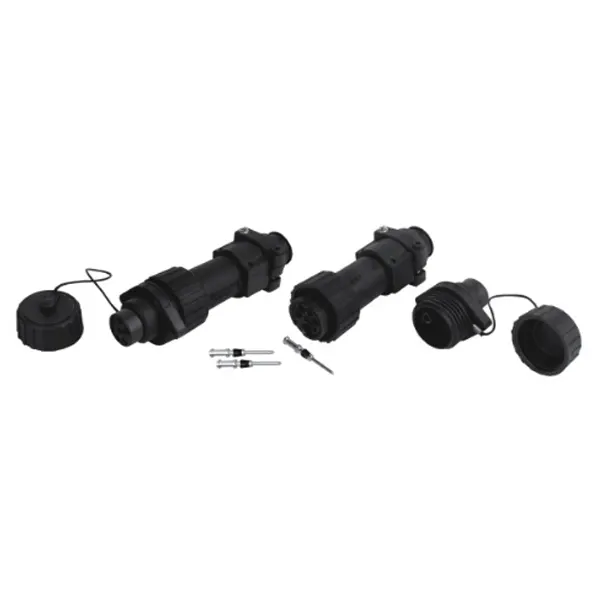What Makes Our Marine Grade Electrical Connectors Stand Out
2025-10-21
As someone who has worked at ACIT for over 20 years, I’m intimately familiar with what customers in marine environments truly need when it comes to connectors. In our product line, the Plastic Waterproof Connector plays a pivotal role — not just an accessory, but a key component in ensuring reliable, long-term performance at sea. I’ve seen firsthand how shortcuts in connector design cost boat owners downtime, repairs and safety risks. In this blog I’ll walk you through the critical features of our marine grade electrical connectors, help you understand what to look for, and share the detailed product parameters our team applies so you can make an informed decision.
What Are the Common Pain Points in Marine Electrical Connections?
From my time in product development and field support at ACIT, here are the main issues our customers face:
-
Corrosion due to salt-water and spray attacking connectors not built for marine use.
-
Water ingress or improper sealing that causes short circuits or intermittent failures.
-
Vibration and motion of the vessel loosening connections or causing fatigue over time.
-
Improper current rating or conductor size leading to voltage drop, overheating or failure.
-
Difficulty servicing and replacing connectors when they are non-standard or poorly labelled.
We made sure our marine grade connectors address each of these. Industry articles highlight that marine connectors must have weatherproof or waterproof design, proper strain relief, high disengagement force, appropriate current rating, and terminal protection from short-circuiting.
Which Key Specification Parameters Should You Evaluate?
Here’s the list of specifications that I personally review before approving any connector design for our marine line:
Key Parameters
-
Material of contact barrels (e.g., tin-plated copper versus untreated steel)
-
Ingress Protection (IP) rating for water and salt exposure
-
Current (ampacity) and voltage rating
-
Conductor wire gauge compatibility (AWG or metric)
-
Vibration / strain relief rating
-
Environmental temperature range, chemical exposure resistance
-
Sealing method (gaskets, heat-shrink, adhesive liner)
-
Connector housing material (UV, salt, UV, impact resistant)
-
Mechanical locking / disengagement force
Below is a table summarising how ACIT’s marine grade connector parameters compare:
| Parameter | Typical ACIT Marine Grade Value |
|---|---|
| Contact material | Tin-plated copper barrel — for corrosion resistance |
| Housing material | UV-stabilised engineering plastic or glass-filled nylon |
| Ingress Protection | IP67 to IP69K (immersion proof) |
| Current rating | Up to 30 A (varies by size) |
| Wire size compatibility | AWG 22 – 10 (or metric equivalent) |
| Operating temperature range | –40 °C to +105 °C (typical) |
| Vibration and shock rating | MIL-STD-810 or equivalent marine spec |
| Locking mechanism | Positive latch + keying (non-interchangeable) |
Why Do These Specifications Matter for Marine Applications?
Let me walk you through why each of these matters, from my experience.
-
Tin-plated copper barrels: As one expert notes, cheap terminals may use plated steel or untinned copper which will corrode quickly in saltwater, whereas a proper marine terminal uses tin-plated copper for longevity and good conductivity.
-
High IP rating (waterproof/immersion): If your connector is exposed on a boat, it may see spray, rain, tide or even splash. The design must prevent ingress of water and salt or you’ll face failures.
-
Vibration / strain relief: Marine environments include engine vibration, hull flexing, motion in waves. A connector must have strain relief so wires don’t fatigue.
-
Current and wire size matching: Under-rating a connector means voltage drop, heat, risk of fire; oversized wire with wrong connector means failure in mechanical reliability.
-
Locking and non-interchangeability: To prevent mis-connections (for example AC vs DC systems on a boat), connectors need keyed designs so they aren’t swapped by mistake.
How Does Our ACIT Marine Grade Connector Family Perform on These Metrics?
Because I’m involved in manufacturing and QA, I can share a representative specification sheet (for one of our models) so you see concrete numbers.
Representative Product: ACIT-MGEC-X Series (Marine Grade Electrical Connector)
Features at a glance
-
Housing: Glass-filled nylon, UV-resistant.
-
Barrel: Tin-plated copper, brazed seam, flared entry for stranded conductor retention.
-
Seal: Dual-wall heat-shrink plus adhesive liner (for our special “Plastic Waterproof Connector” variant).
-
Locking: Snap-latch + key-way to prevent mismating.
-
Environmental: IP68 rated (1 m immersion for 30 minutes) + salt fog test 96 h.
-
Current range: 10 A, 20 A, 30 A models available.
-
Wire gauge compatibility: AWG 22–10 (0.5 mm²–5.0 mm²) depending on version.
-
Temperature range: –40 °C to +105 °C continuous; +125 °C transient.
-
Vibration/shock: Complies with MIL-STD-810 G (method 514.6 vibration, 516.7 shock) as used in marine/vehicle applications.
-
Material compliance: RoHS, REACH.
Technical table for quick reference
| Model | Current Rating | Wire Gauge | IP Rating | Barrel Material |
|---|---|---|---|---|
| MGEC-X10 | 10 A | AWG 22–16 | IP68 | Tin-plated copper |
| MGEC-X20 | 20 A | AWG 16–14 | IP67 | Tin-plated copper |
| MGEC-X30 | 30 A | AWG 14–10 | IP67 | Tin-plated copper |
Why this is beneficial
-
The dual-wall heat-shrink with adhesive liner ensures that our Plastic Waterproof Connector variant achieves a sealed connection that prevents water wicking into the barrel.
-
The brazed seam barrel and flared entry ensure the wire strands enter cleanly and are properly crimped, preventing strand splaying and high resistance — a common failure in low-quality connectors. (This aligns with best-practice guidance in marine terminals.)
-
The keyed latch system ensures you cannot accidentally plug an AC system connector into a DC system socket, which is a major risk in boat wiring.
-
The broad temperature and environmental rating ensures reliability in harsh marine conditions (UV, salt, vibration, extreme temperatures).
-
Offering multiple current ratings and wire sizes means you can choose the right model for your circuit – avoiding oversizing or undersizing that causes trouble down the line.
What Are Typical Use Cases and Where Should You Specify These Connectors?
From my years of installations, the following areas on boats and marine vessels are where our connectors shine:
-
Wiring for bilge pumps, navigation lights, deck lighting – where exposure to spray and salt is high.
-
Engine room wiring, where vibration is heavy and space is constrained.
-
Under-deck or cable-run junctions where access is limited and reliability is key.
-
Outdoor electrical panels, solar or auxiliary systems on boats where salt and UV degrade cheaper connectors.
-
Industrial marine vehicles, offshore platforms, and any environment where multi-wire sealed connectors are needed.
By specifying our marine grade connector family you reduce maintenance, avoid corrosion-related outages, and ensure safety and compliance with marine wiring standards.
How Should You Specify and Install to Get Maximum Benefit?
Here are practical tips I would share from my experience to ensure you maximise the value of the connector:
-
Choose the correct current rating and wire gauge matching your circuit – don’t oversize thinking “just in case”.
-
Prepare your conductors properly: strip to correct length, clean strands, and ensure full insertion into the barrel.
-
Use the proper crimping tool – a poor crimp is often the root of failure. (As one technical article emphasised: cheap crimpers plus cheap terminals lead to high failure rates.)
-
After crimping, apply the heat-shrink (if applicable) according to manufacturer instructions to ensure the adhesive liner flows and seals properly.
-
Label appropriately and prevent mis-mating of plugs and sockets (our keyed system helps).
-
Inspect regularly (annually or per maintenance schedule) for signs of corrosion, loosening, water ingress, or overheating (discolouration, melting).
-
In extremely harsh or submerged conditions, choose the highest IP rating available (IP68 rather than just IP67) and ensure the seal is intact.
Why Should You Choose ACIT’s Marine Grade Connectors Over Generic Alternatives?
Drawing on two decades of experience with marine electrical systems, I’ll summarise the key advantages you’ll get when you go with us:
-
Marine-specific design: Not simply repurposed automotive connectors, but built from the ground up for saltwater, vibration, UV and immersion.
-
Proven materials: Tin-plated copper barrels, heat-shrink with adhesive liner, robust housing.
-
Comprehensive spec documentation: We provide full spec sheets (as above), so you know exactly what you’re getting.
-
Service and support: Having worked in the field, I know that even the best connector needs proper installation and service. We provide guidance, QC support and spare parts.
-
Compliance and reliability: Designed to meet or exceed standards cited by industry guides. E.g., connectors must be weather-proof/watertight, have proper disengagement force, and support capacity for the wire size.
-
Long-term cost savings: Yes, you may pay a little more upfront, but by avoiding corrosion, failures, rework and downtime you save much more over the lifecycle of your vessel.
What Questions Should You Ask Before Buying?
Here are some questions I encourage customers to ask (and I answer personally at ACIT) before specifying connectors:
-
Is the housing rated for salt-fog and UV exposure?
-
What is the IP rating for the connector when mated? Can it be immersed?
-
What is the current rating and wire size compatibility?
-
Is the contact barrel tin-plated copper or a cheaper material?
-
What locking or keying features prevent mis-mating?
-
Are tools and installation guidelines provided?
-
What maintenance schedule is recommended?
-
Do you offer spares, colour coding, custom configurations?
-
Is the connector compliant with marine wiring standards or guidelines (such as those referenced in marine-electrical technical guides)?
How Can You Contact Us to Get a Quote or More Information?
If you are installing or servicing a marine vessel and need high-quality connectors built for the environment, I’d love to help you. At ACIT, we’re ready to provide you with detailed technical sheets, installation guidance, pricing, sample connectors and custom configurations.
Contact us today – send your inquiry, request a quote, ask for sample kits, and let’s ensure your next wiring project uses marine-grade reliability. Please feel free to contact us via email or phone, and our team will respond promptly.
Thank you for reading — I look forward to helping you upgrade your marine electrical systems with connectors that perform.



